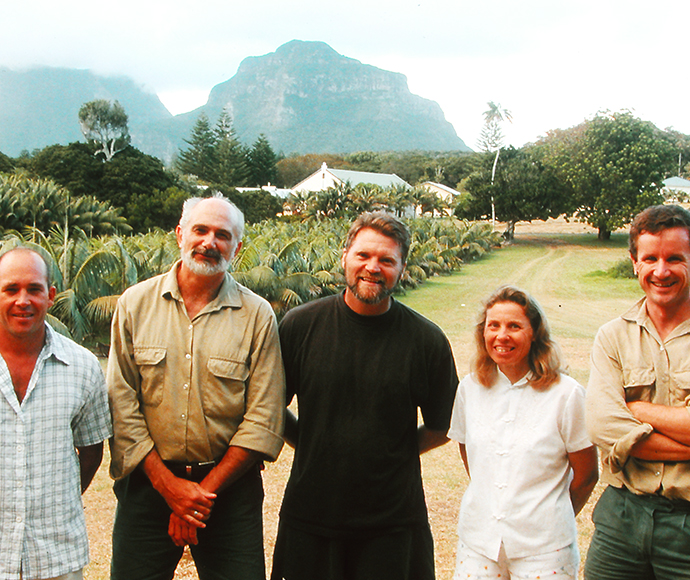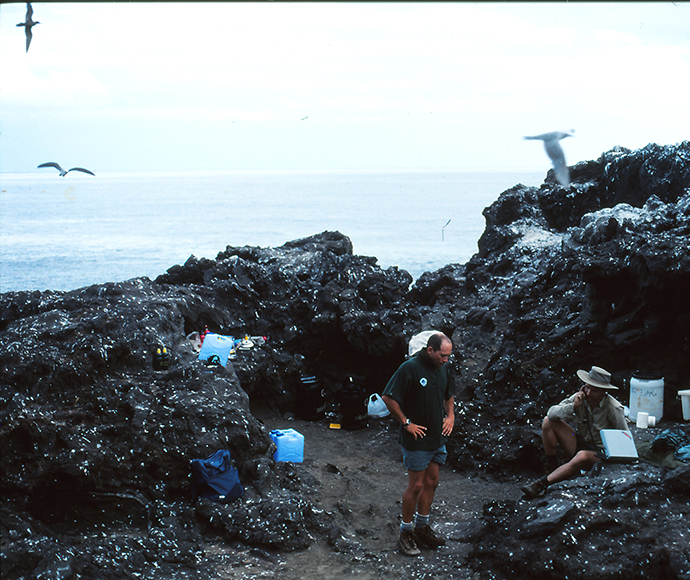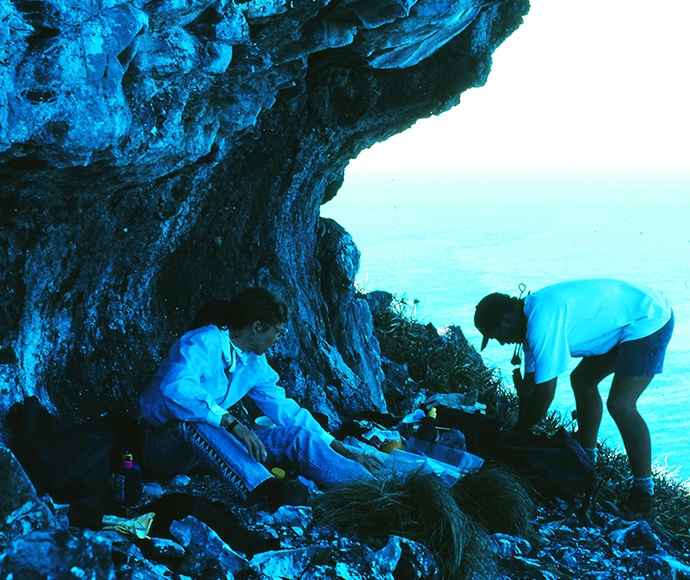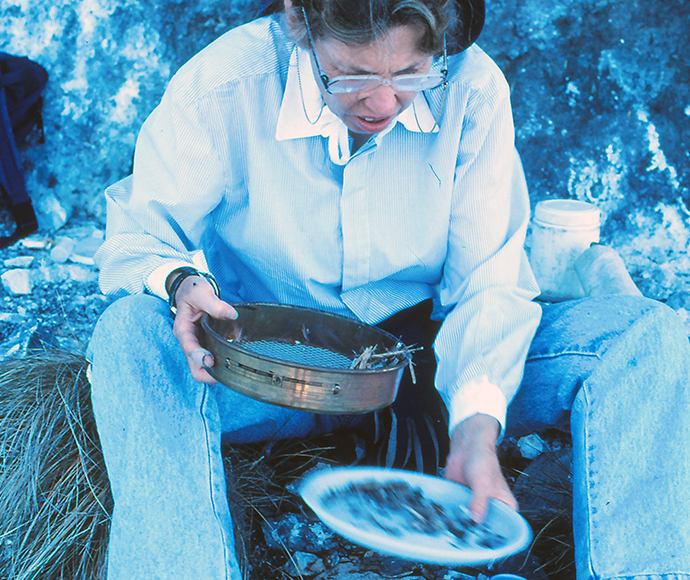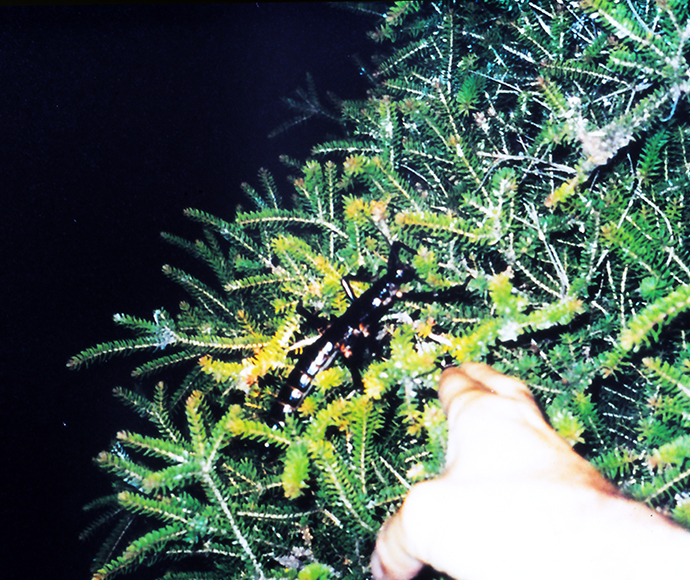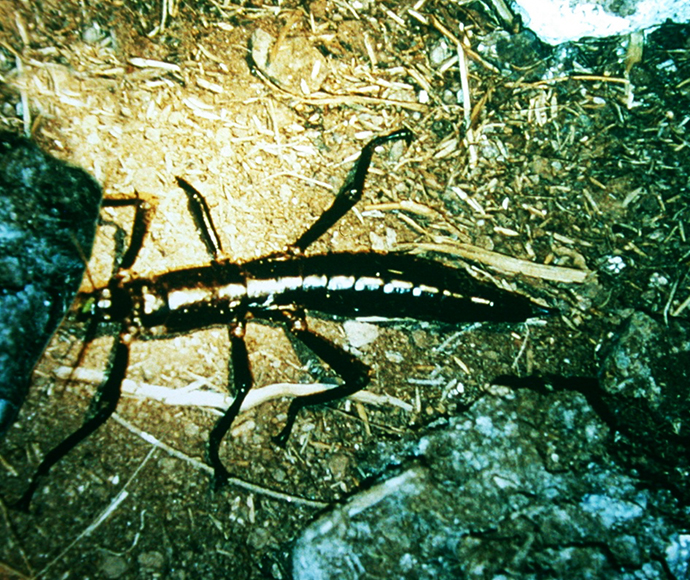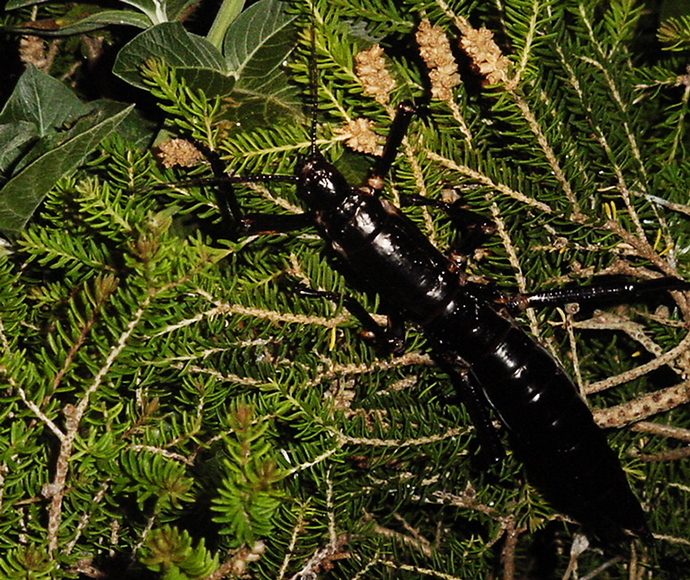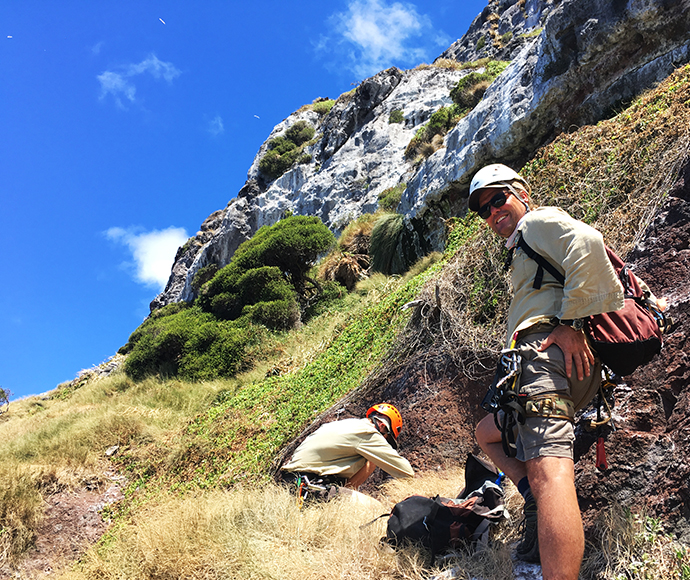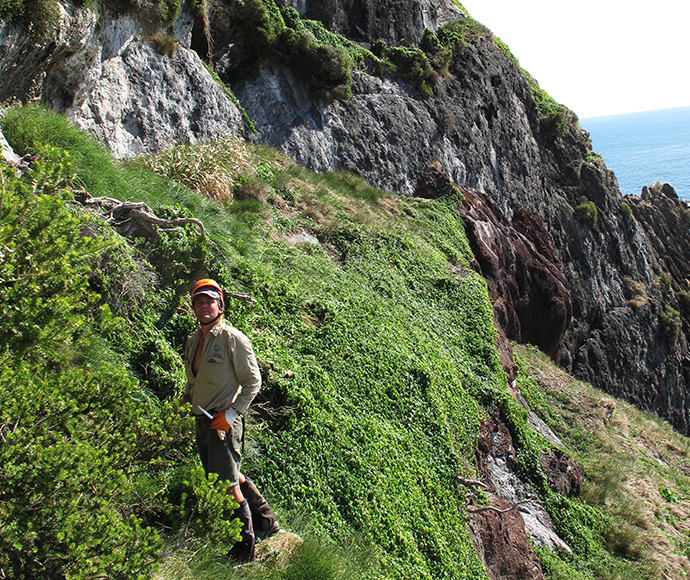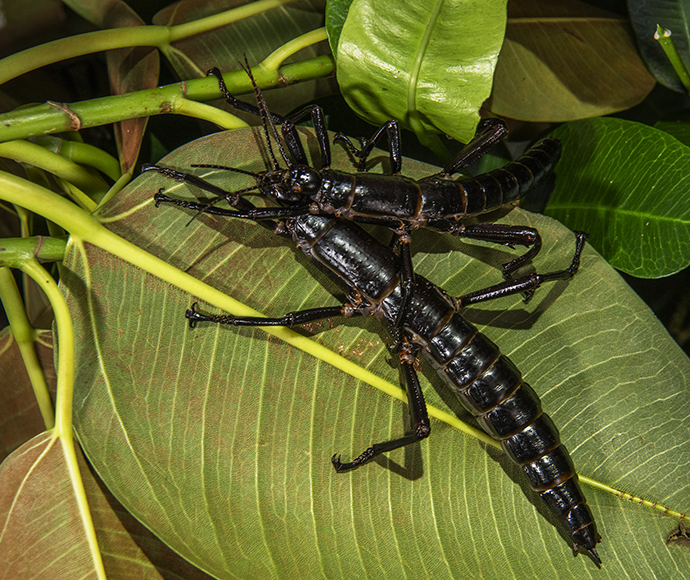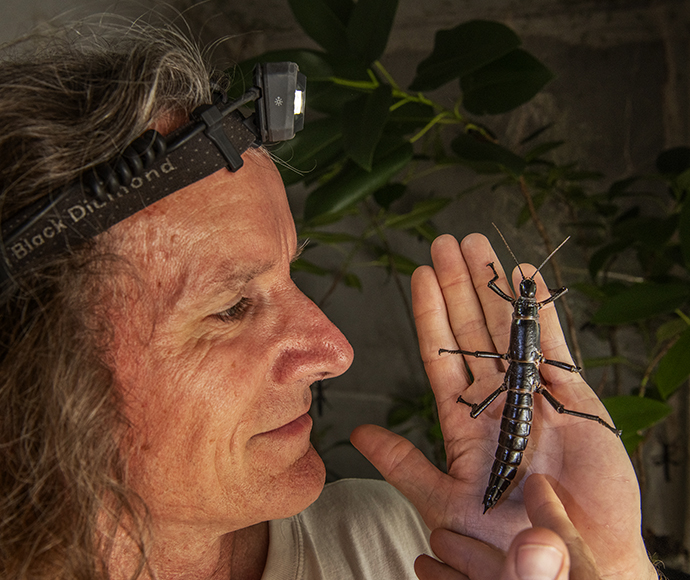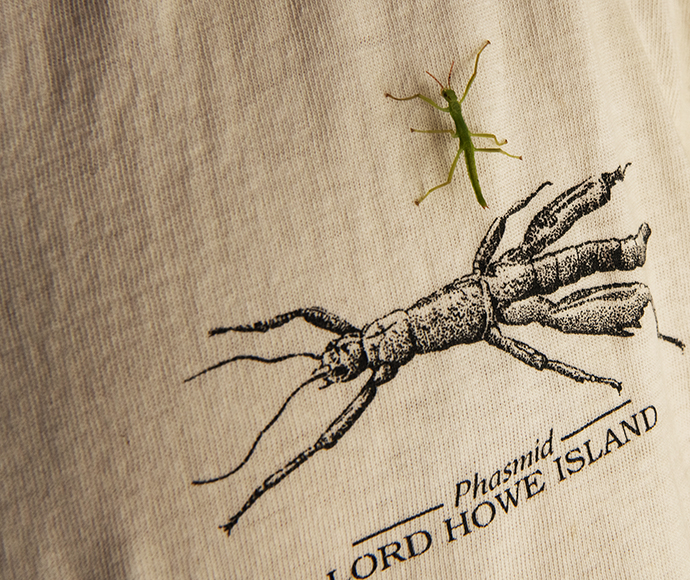Rediscovering the Lord Howe Island stick insect
On World Stick Insect Day we celebrate the rediscovery of the world's most endangered insect, the Lord Howe Island phasmid Dryococelus australis.
The tale of how the species survived against all odds clinging to a bush on the tallest volcanic sea stack in the world is legendary, as are the monumental efforts to secure and protect its population from extinction.
Boom to bust
"The Lord Howe phasmid is an endemic stick insect that was thought to be extinct until it was rediscovered in 2001. It's a bulky flightless nocturnal stick insect affectionately known the 'Land Lobster' and is as long as the palm of a hand, glossy black, with a tubular body as thick as a finger, "says Senior Scientist with the Department of Planning and the Environment, Nicholas Carlile. The phasmid was common in the humid, dense forests on Lord Howe Island until 1918 when the cargo ship Makambo ran aground, accidentally releasing ship rats onto the island.
The rodents quickly established in large numbers and wreaked utter devastation on Lord Howe's unique 'pest free adapted' ecology, which for 6.5 million years had been an untouched paradise of endemic birds, insects and plants, unvisited by humans until the end of the 18th Century. Within 5 years of the arrival of rats, several bird species had become extinct, and in time the phasmid met the same fate, or so it was thought.
Finding skins and frass (poo) an important clue
For decades after its demise all that was left of the species were a few museum specimens, and an account in 1964 and again in 1969 of climbers finding sloughed skin of phasmids on the immense, windswept near-vertical sea stack 23 kilometres from Lord Howe, known as Balls Pyramid, and the stories passed down from the ancestors of the island's 350 residents.
To ascertain whether these sloughed skins were indeed from live animals, a team of 5 mounted an investigative expedition in 2001. The team included National Parks and Wildlife research scientists David Priddel and Nicholas Carlile, Lord Howe Island Board ranger Dean Hiscox, entomologist Stephen Fellenberg and entomology curator Margaret Humphrey from the Macleay Museum at the University of Sydney.
Returning empty handed from their day of scrambling, the team discovered suspicious frass (insect faeces), under a bush, that could only have been made by a large invertebrate. Later that night, climbing by flashlight, knowing that the creatures were most active in the evening, Carlile and Hiscox, ascended 70 metres up the pyramid and miraculously found 3 adult phasmids clinging to a single tea-tree Melaleuca howeana bush. The discovery made news around the world, and immediately the team began to plan how best to secure the species' future.
Securing the species
In 2003, with approvals to establish a captive population, 3 Lord Howe Island Board staff Dean Hiscox, Christo Haselden and Mark Thompson collected 2 pairs, with one pair, named Adam and Eve, sent to Melbourne Zoo for a captive breeding program. Soon after arriving at the zoo, Eve became very ill but fortunately survived with exceptional care by her keeper Patrick Honan who carefully dropped a mixture of sugar, calcium and ground melaleuca leaves into her mouth.
In the following years further surveys have found as many as 40 adults at the known breeding site. The site was being invaded by the exotic scrambling vine, 5-leaf morning glory Ipomoea cairica, and when conditions are suitable, the Lord Howe Island Board weed team undertake targeted control to prevent this vine from smothering known habitat of the phasmid. They also look for the presence and signs of the phasmid, as well as other threatened species such as Lord Howe skink Oligosoma lichenigera, Lord Howe gecko Christinus guentheri, white-bellied storm-petrel Fregetta grallaria and Lord Howe Island wood-feeding cockroach Panesthia lata.
Although a survey undertaken by the Australian Museum in 2017 found only 16 individuals left in the wild on Balls Pyramid, a captive breeding program led by Melbourne Zoo has proven extraordinarily successful. So far, since the commencement of the program, nearly 19,000 phasmids have been hatched over 16 generations since Adam and Eve. Today 800 adults and 3500 nymphs are in captivity at Melbourne Zoo and more at a facility at the Lord Howe Island Board with other captive populations at the Bristol and San Diego Zoo.
Survival to revival
And now, 20 years since their rediscovery, a multi-agency team from Melbourne Zoo, Lord Howe Island Board and the Department of Planning and Environment are looking to obtain additional phasmids from Balls Pyramid to bolster the genetics of the captive breeding program and are investigating options to return this species to the wild.
There are certainly major ecological benefits to consider says Carlile "This species was once a major converter of vegetative matter and played an important function in the islands ecology as an ecosystem engineer, increasing the richness and speeding up the recycling of nutrients.
"They are currently a missing piece of the puzzle and it would be phenomenal to see them back in the forest someday."
The road to returning the species to its original home on Lord Howe Island will involve a close consultation with the local community and further research into the species ecological relationship, genetic robustness and disease risks.
The conservation of this species is supported through the Saving our Species program and $30,000 has been allocated towards the conservation of this species over the next 12 months. The conservation priorities for this period are to improve safe access to Ball's Pyramid for future collections and protect the stick insect's habitat through weed control of the main habitat bush.
There have also been substantial in-kind investments through staff at the Department of Planning and Environment, the Lord Howe Island Board, Melbourne Zoo and the Australian Museum and partners over the past 20 years.
